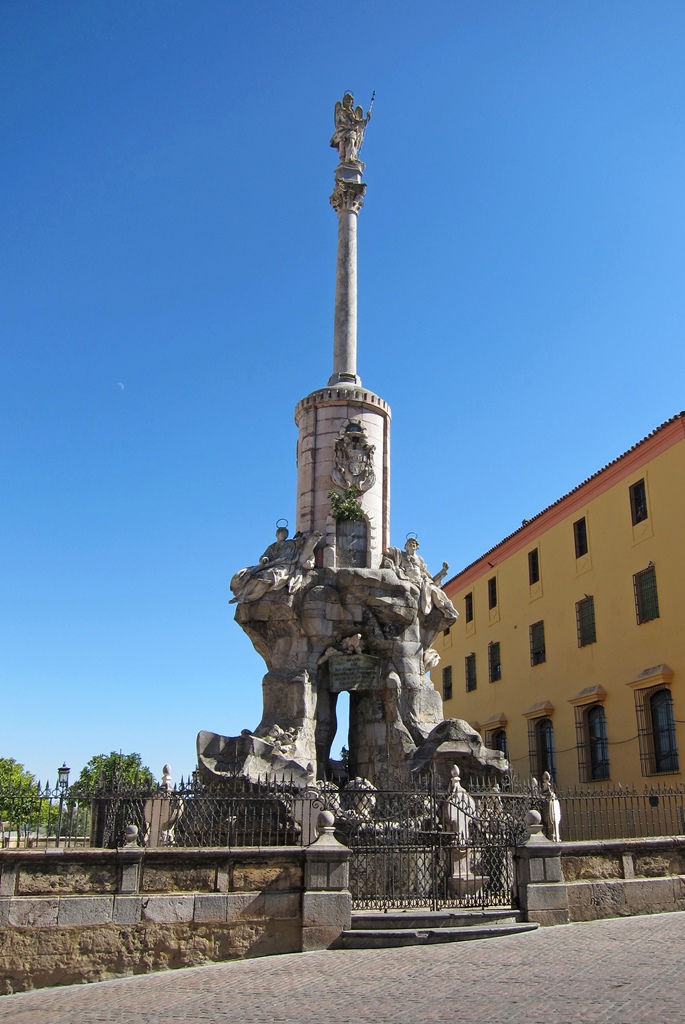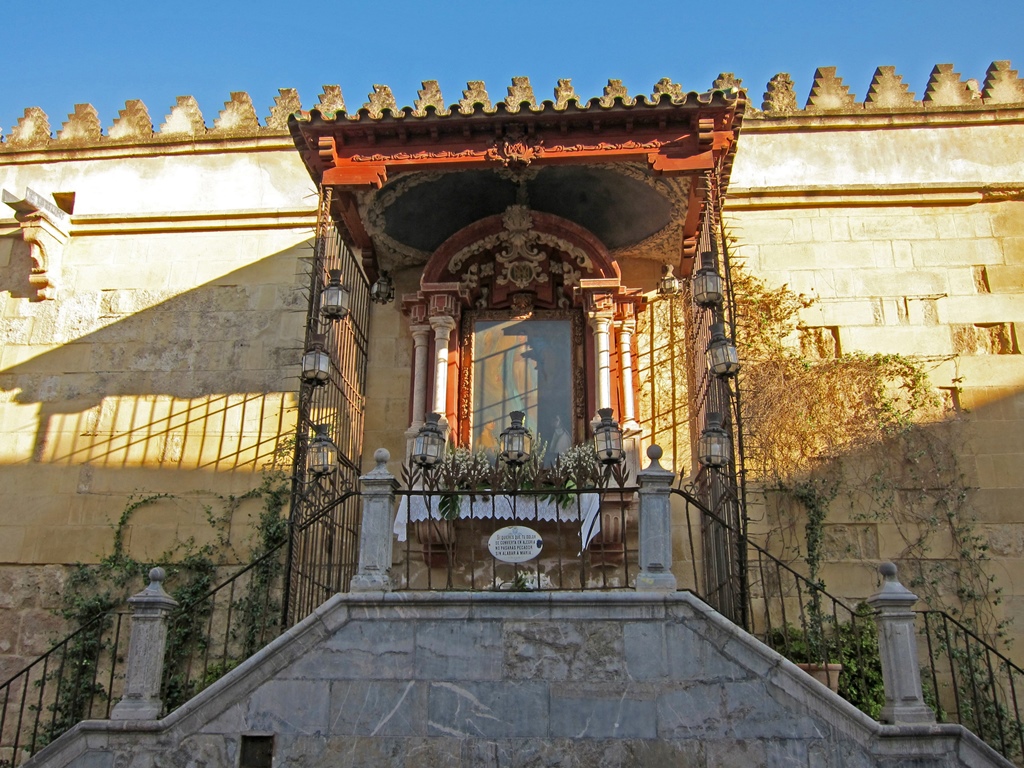Southern Spain
The city of Córdoba, located about an hour and a quarter up the Guadalquivir River from Seville by
train, is a decent-sized city of about 330,000. It is not considered a major metropolitan area,
however. This keeps it from being the hottest metropolitan area in Europe, a title held by Seville,
which has average summer highs of 96F. But Córdoba's average summer highs are 98F, which makes it
the hottest city in Europe. Days exceeding 40C, or 104F, are not unusual in the summer. Naturally
we were visiting the city in August. We were not going for the climate, however. We were going for
the city's history. Or rather to gawk at some cool stuff its history left behind.
Human habitation in Córdoba goes back a long way, at least to 40,000 BC or so, as Neanderthal
remains from about this time have been found. Signs of human activity after this time have
also been found, but the first historical reference to a settlement in this area occurred in the 3rd
Century BC, at the time of Carthaginian expansion from northern Africa. The Romans tossed out the
Carthaginians in 206 BC, and held onto the region until the 6th Century AD, adding a significant
amount of infrastructure and other development during this period. The Visigoths took the city from
the Byzantine Empire late in the 6th Century, and in turn lost the city to a Moorish army in 711.
Córdoba became the capital of the emirate of al-Andalus, which eventually became a Caliphate (and
ultimately the region of Andalusia). The city is thought to have grown to 500,000 inhabitants or
more during this time, and became one of the most advanced cities in the world in a variety of
disciplines. Early in the 11th Century, a series of revolts and assassinations led to a long
decline in the city's prominence. It was captured by Ferdinand III of Castile in 1236, as part of
the Reconquista. Later Castilian monarchs rebuilt the decrepit main palace that had been
used to rule the Caliphate into a palace for themselves, to be used as a residence and occasional
refuge from attempted revolts. Ferdinand and Isabella used it as their headquarters during the
campaign to conquer Granada, and it was here that the last Moorish ruler, Boabdil, was imprisoned
until he agreed to make concessions to them. They also established Córdoba as a headquarters for
the Spanish Inquisition.
This was all plenty of history to arouse our interest (actually we weren't even aware of a lot of
this), so we took the aforementioned train ride and ended up at our hotel (the hotel was close to
the river, but the train station was not, so a taxi ride was also involved), the Hotel Hacienda
Posada de Vallina. No bland, institutional hotel corridors here. When they call themselves a
hacienda, they're not kidding. We even got a surprise roommate, an intense-looking Spaniard with
a hand on the globe.
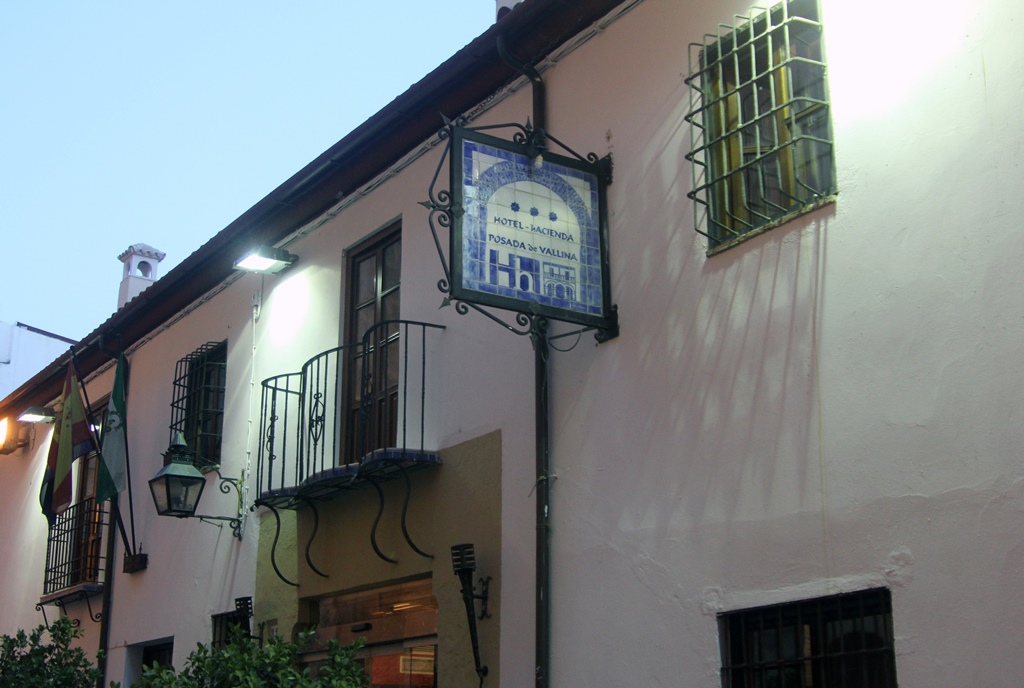
Hotel Hacienda Posada de Vallina

Atrium Outside Room
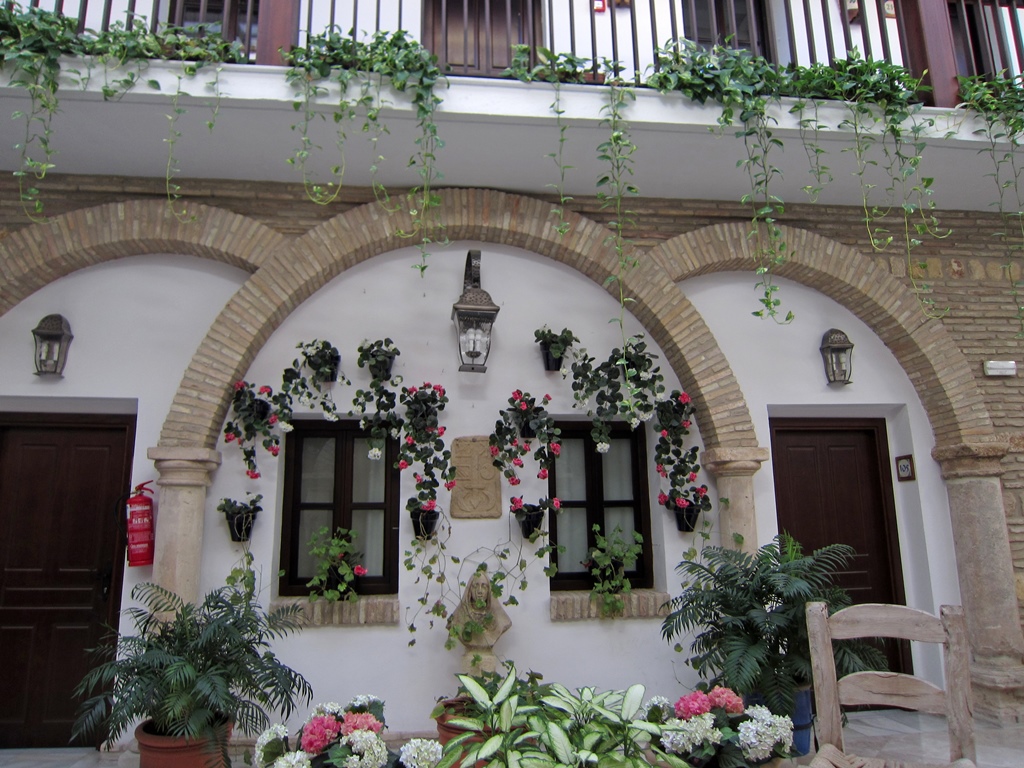
Flowers Outside Room

Nella and Bed

Entryway with "Roommate"
But we'd only signed up for an overnight stay in Córdoba, so we were intent on getting out and
looking at things. We started by heading down toward the Guadalquivir. We turned out to be
close to a large pedestrianized bridge across the river. Near our (north) end of the bridge
there was a column called the Triunfo de San Rafael column, which was created in 1765
to honor the Archangel Raphael, the protector of Córdoba.
Triunfo de San Rafael Column

Detail, Triunfo de San Rafael Column
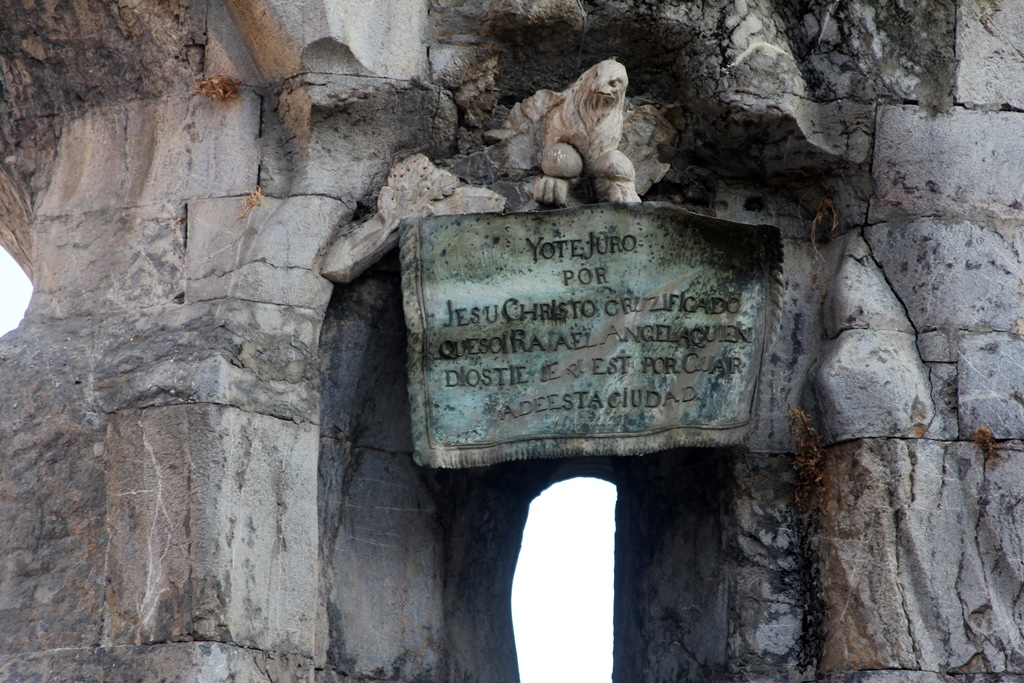
Detail, Triunfo de San Rafael Column
At the end of the bridge was an arch called the Puerta del Puente (Gate of the Bridge). The
arch was originally built in the 1570's as a gateway into the city, but has undergone 20th and 21st
Century restorations. The bridge itself is known as the Roman Bridge, as it's based on a bridge
built by the Romans in the 1st Century BC. The bridge has been rebuilt and restored several times
since then, so not much remains of the original structure. Until the 20th Century, this was the
only bridge across the Guadalquivir in Córdoba. At the far (south) end is a structure called the
Calaharra Tower which was originally built by the Moors in the 12th Century to mark the beginning
of the road to Seville. The river upstream (east) of the bridge appears reasonably clear, but
downstream there are several islets, on some of which are structures in varying degrees of decay
which were once mills built by the Moors (there are mills on the riverbanks as well). Looking
back toward the north end of the bridge, we could see the Old Town, dominated by the city's former
Great Mosque, or Mezquita (more on this later).
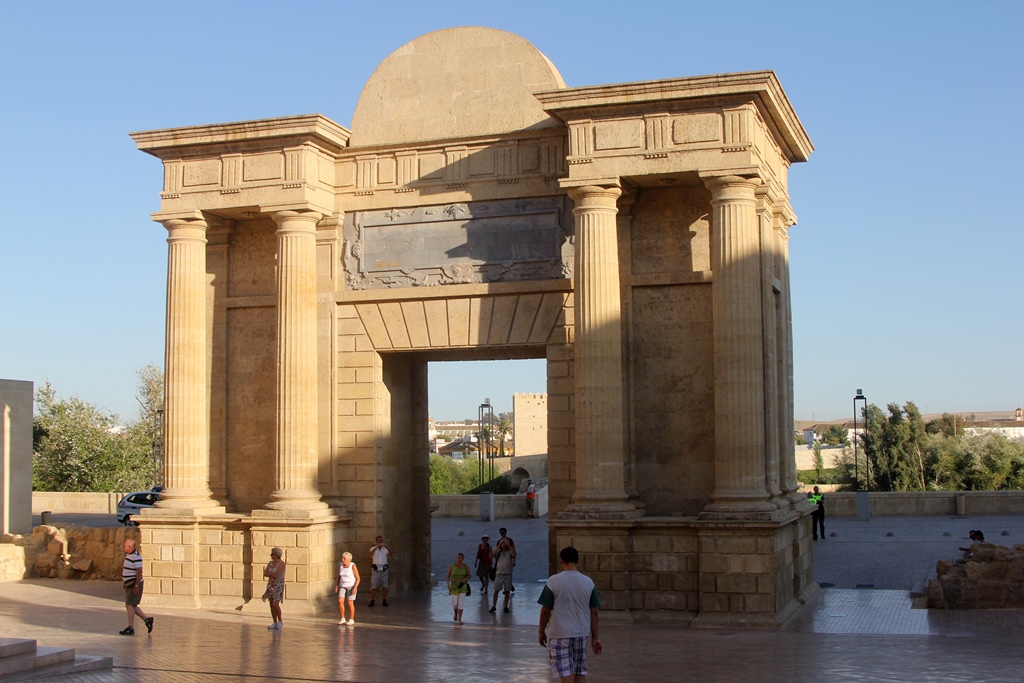
Puerta del Puente
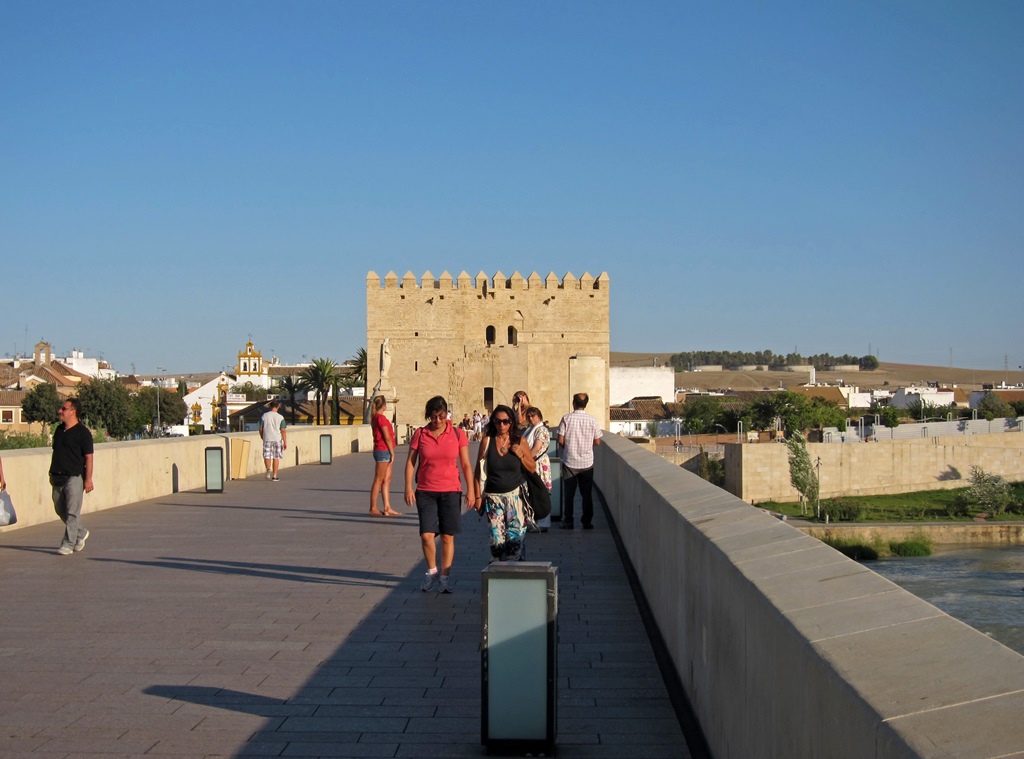
Roman Bridge with Calaharra Tower
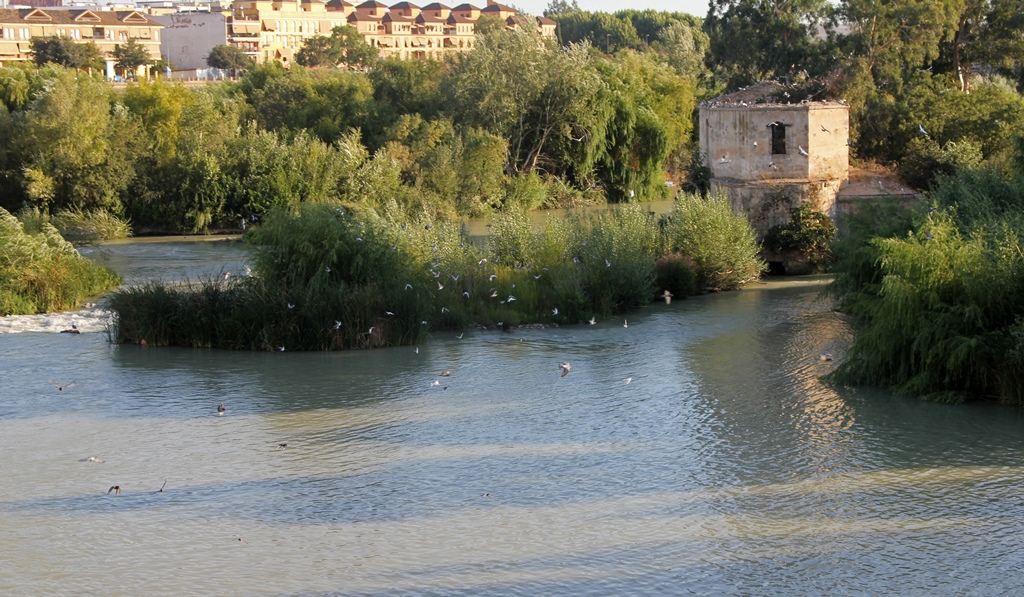
Mill of Pápalo Tierno and Birds

On Roman Bridge (with Mezquita)
From the bridge we returned to the Old Town and explored some of the narrow streets on the far
side of the Mezquita.

Narrow Street, Old Town
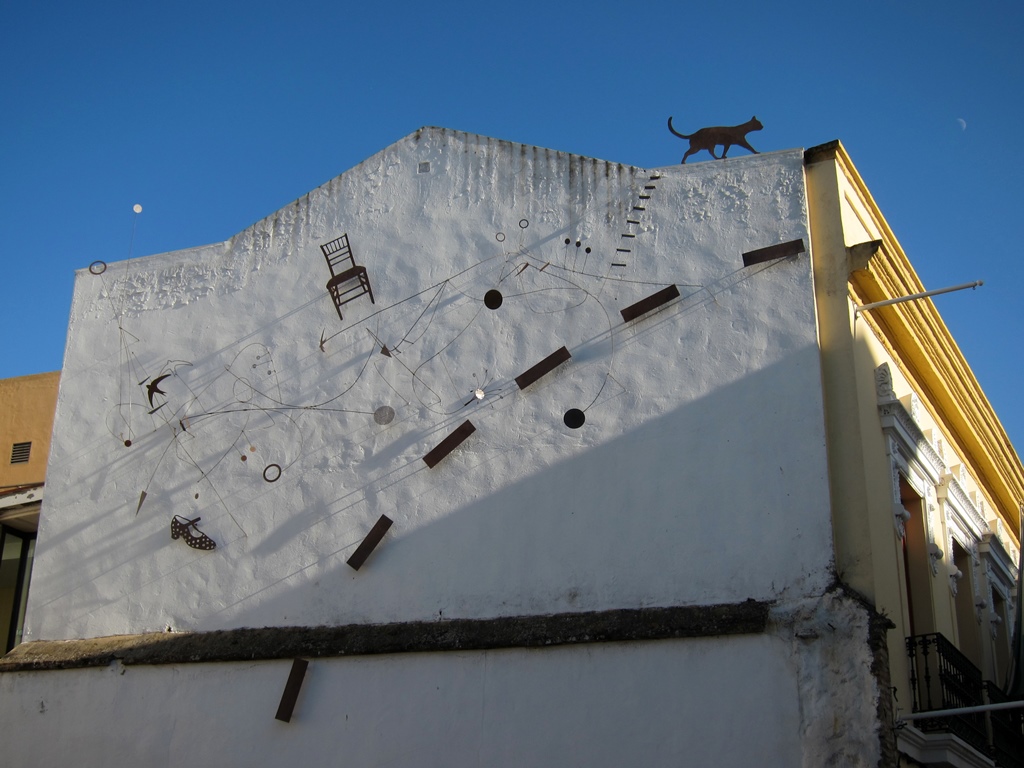
Wall Art

Meryan Leather Workshop

Flower-Decorated House
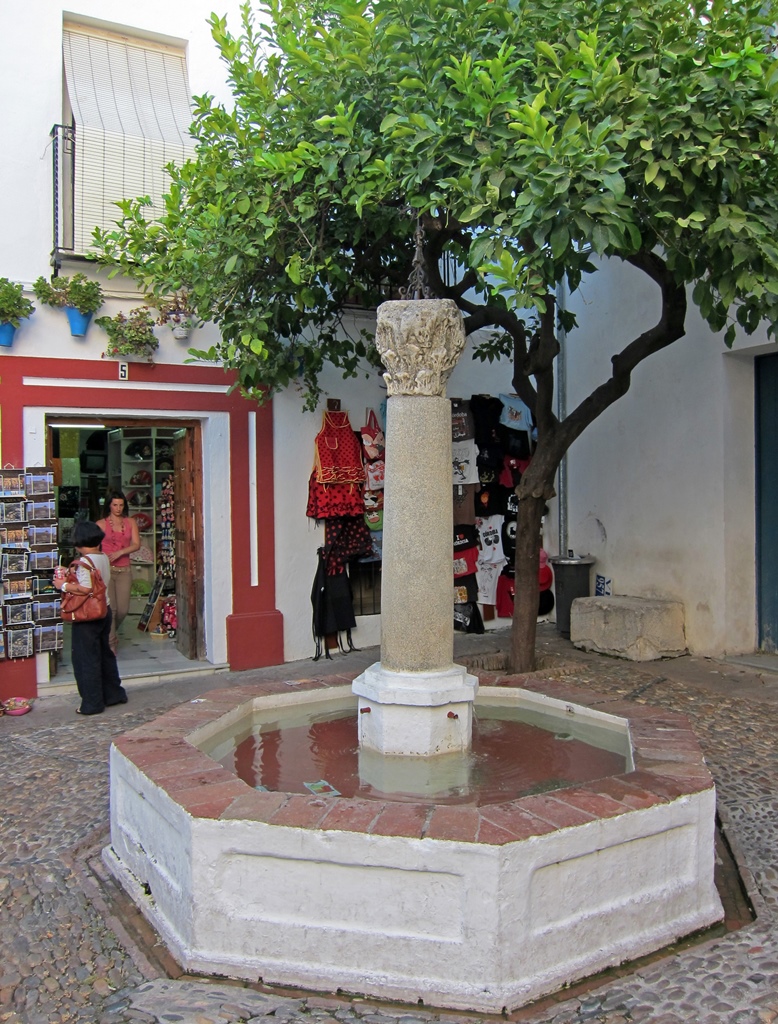
Nella with Fountain and Souvenir Store
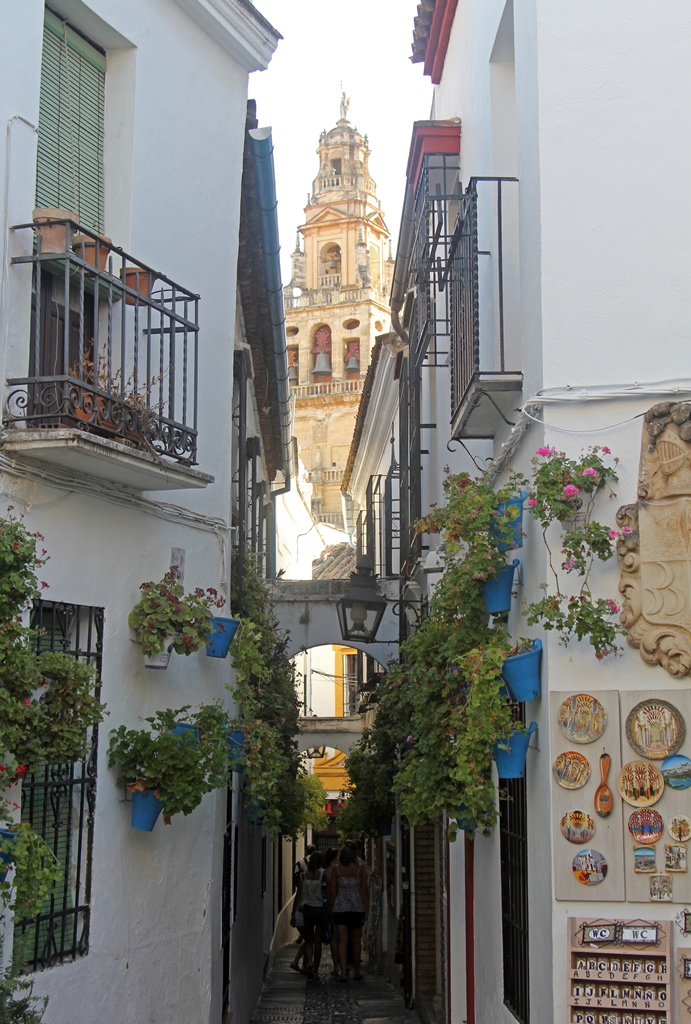
Bell Tower from Calleja de las Flores
Altar of the Virgin of the Lanterns (18th C.)
This left one main target for us, the primary reason we had come to Córdoba – the Mezquita itself.







